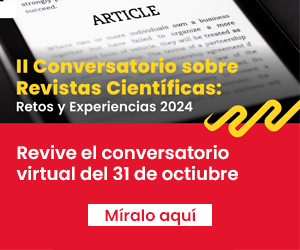Validity of the evaluation of alcohol consumption established by the technical document of global evaluation of HIV-infected adults
DOI:
https://doi.org/10.20453/rmh.v33i4.4405Keywords:
Alcohol Drinking, HIV,, Antiretroviral Therapy, Highly Active, Highly Active Gold Standard.Abstract
Objectives: To determine the validity of the evaluation of alcohol consumption established by the national strategy to prevent and control STI-HIV-AIDS (ESNITSS) of HIV-infected adults that started anti-retroviral treatment (ART). Methods: Diagnostic study of HIV patients in a single hospital in Lima from September 2017 to January 2018 using data from a phase one study “Effectiveness of nursing counseling in improving adherence to ART among patient with alcohol consumption”. Three hundred and fifty patients were randomly selected among 4000 participants. Two gold standards evaluated alcohol consumption: 1. Last month alcohol consumption and ii; alcohol consumption identified by the Alcohol Use Disorders Identification Test (AUDIT). Sensitivity, specificity, safety of the evaluation and probability rates. Results: sensitivity and specificity were moderate for last month alcohol consumption (s=0.64; e=0.57); specificity was low for evaluation of consumption risk (e=0.48). Positive validity rates demonstrated that the evaluation is not useful (<2). Conclusions: The evaluation of alcohol consumption followed by the ESNITSS has no diagnostic utility.
Downloads
References
Grant BF, Chou SP, Saha TD, et al. Prevalence of 12-Month Alcohol Use, High-Risk Drinking, and DSM-IV Alcohol Use Disorder in the United States, 2001-2002 to 2012-2013: Results From the National Epidemiologic Survey on Alcohol and Related Conditions. JAMA Psychiatry. 2017;74(9):911-23.
Rehm J, Gmel GE, Gmel G, et al. The relationship between different dimensions of alcohol use and the burden of disease-an update. Addiction. 2017;112(6):968-1001.
Pellowski JA, Kalichman SC, Kalichman MO, Cherry C. Alcohol-antiretroviral therapy interactive toxicity beliefs and daily medication adherence and alcohol use among people living with HIV. AIDS Care. 2016;28(8):963-70.
Heestermans T, Browne JL, Aitken SC, Vervoort SC, Klipstein-Grobusch K. Determinants of adherence to antiretroviral therapy among HIV-positive adults in sub-Saharan Africa: a systematic review. BMJ Glob Health. 2016;1(4): e000125. doi: 10.1136/bmjgh-2016-000125
Ministerio de Salud. Norma Técnica de salud de atención integral del adulto con infección por el Virus de Inmunodeficiencia Humana (VIH). Lima: Ministerio de Salud de Perú; 2019. (Citado el 4 de marzo de 2020). Disponible en: https://www.gob.pe/institucion/minsa/informes-publicaciones/279707-norma-tecnica-de-salud-de-atencion-integral-del-adulto-con-infeccion-por-el-virus-de-inmunodeficiencia-humana-vih
Babor TF, Higgins-Biddle JC, Saunders JB, Monteiro MG. The alcohol use disorders Identification Test. Gonebra: World Health Organization; 2001. (Citado el 4 de marzo de 2020). Disponible en: http://apps.who.int/iris/bitstream/handle/10665/67205/WHO_MSD_MSB_01.6a.pdf;jsessionid=0AD31D22C6DB5B552571BB257C7812CF?sequence=1
Allen JP, Columbus M. Assessing Alcohol Problems: A Guide for Clinicians and Researchers. Pennsylvania: DIANE Publishing; 2003. 585 p.
Cooke R, Dahdah M, Norman P, French DP. How well does the theory of planned behaviour predict alcohol consumption? A systematic review and meta-analysis. Health Psychol Rev. 2016;10(2):148-67.
McKenna H, Treanor C, O’Reilly D, Donnelly M. Evaluation of the psychometric properties of self-reported measures of alcohol consumption: a COSMIN systematic review. Subst Abuse Treat Prev Policy. 2018;13(1):6.
Dawson DA, Room R. Towards agreement on ways to measure and report drinking patterns and alcohol-related problems in adult general population surveys: the Skarpö conference overview. J Subst Abuse. 2000;12(1-2):1-21.
Dawson D. Methodological Issues in Measuring Alcohol Use. Bethesda, Maryland: National Institute on Alcohol Abuse and Alcoholism. (Citado el 4 de marzo de 2020). Disponible en: https://pubs.niaaa.nih.gov/publications/arh27-1/18-29.htm
Nugawela MD, Langley T, Szatkowski L, Lewis S. Measuring Alcohol Consumption in Population Surveys: A Review of International Guidelines and Comparison with Surveys in England. Alcohol Alcohol. 2016;51(1):84-92.
Sobell LC, Sobell MB. Alcohol Consumption Measures. En: National Institute on Alcohol Abuse and Alcoholism. Assessing Alcohol Problems: A Guide for Clinicians and Researchers. Rockville: National Institute on Alcohol Abuse and Alcoholism; 2003.
Musayón-Oblitas Y, Cárcamo C, Gimbel S, Echevarria J, Graña A. Efectividad de la Consejería en Enfermería en la Mejora de la Adherencia al TARGA en pacientes con VIH y Conducta de Consumo de Alcohol. Lima: SIDISI - UPCH.
Babor TF, Higgins-Biddle JC, Saunders JB, Monteiro MG. Cuestionario de Identificación de los Transtornos debidos al Consumo de Alcohol. Ginebra: World Health Organization; 2001.
Valencia Martín JL, González MJ, Galán I. Aspectos metodológicos en la medición del consumo de alcohol: la importancia de los patrones de consumo. Rev Esp Salud Pública. agosto de 2014;88(4):433-46.
National Institute on Alcohol Abuse and Alcoholism. Datos y estadísticas sobre el alcohol | National Institute on Alcohol Abuse and Alcoholism (NIAAA) [Internet]. [citado 27 de noviembre de 2022]. Disponible en: https://www.niaaa.nih.gov/publications/datos-y-estadisticas-sobre-el-alcohol
Ballesta R, Millán A, Tena M, Fornovi L, Alonso C, Pedro CD, et al. Encuesta sobre Alcohol y Drogas en España (Edades) 1995-2019/2020. :97.
Consejo Nacional para el Control de Estupefacientes (CONACE) - Ministerio del Interior - Gobierno de Chile. Septimo estudio nacional de Drogas en Población General de Chile.pdf [Internet]. [citado 27 de noviembre de 2022]. Disponible en: https://www.senda.gob.cl/wp-content/uploads/2019/07/2006_septimo_estudio_nacional.pdf
Comisión Nacional para el Desarrollo y Vida sin Drogas. PERÚ - Estudio Nacional sobre Prevención y Consumo de Drogas en Estudiantes de Secundaria 2017.pdf [Internet]. [citado 27 de noviembre de 2022]. Disponible en: http://www.cicad.oas.org/oid/pubs/PER%C3%9A%20-%20Estudio%20Nacional%20sobre%20Prevenci%C3%B3n%20y%20Consumo%20de%20Drogas%20en%20Estudiantes%20de%20Secundaria%202017.pdf
Bravo-Grau S, Cruz Q JP. Estudios de exactitud diagnóstica: Herramientas para su Interpretación. Rev Chil Radiol. 2015;21(4):158-64.
Vizcaíno-Salazar GJ. Importancia del cálculo de la sensibilidad, la especificidad y otros parámetros estadísticos en el uso de las pruebas de diagnóstico clínico y de laboratorio. Med Lab. 2017;23(7-8):365-86. 23. Pita-Fernández S, Pértegas-Díaz S. Pruebas diagnósticas: Sensibilidad y especificidad. Cad Aten Primaria 2003; 10: 120-124. (Citado el 4 de marzo de 2020). Disponible en: https://www.fisterra.com/mbe/investiga/pruebas_diagnosticas/pruebas_diagnosticas.asp
Bonacini M. Alcohol use among patients with HIV infection. Ann Hepatol. 2011;10(4):502-7.
Kahler CW, Liu T, Cioe PA, et al. Direct and Indirect Effects of Heavy Alcohol Use on Clinical Outcomes in a Longitudinal Study of HIV Patients on ART. AIDS Behav. 2017;21(7):1825-35.
World Health Organization. Management of Substance Abuse Team. Global status report on alcohol and health 2018. Ginebra: World Health Organization ;2018.
Vagenas P, Azar MM, Copenhaver MM, Springer SA, Molina PE, Altice FL. The Impact of Alcohol Use and Related Disorders on the HIV Continuum of Care: A Systematic Review. Curr HIV/AIDS Rep. 2015;12(4):421-36.
Santos F, Galvão MTG, Cunha GH, et al. Alcohol effect on HIV-positive individuals: treatment and quality of life. Acta Paul Enferm. 2017;30(1):94-100.
Bagby GJ, Amedee AM, Siggins RW, Molina PE, Nelson S, Veazey RS. Alcohol and HIV Effects on the Immune System. Alcohol Res Curr Rev. 2015;37(2):287-97.
González-Álvarez S, Madoz-Gúrpide A, Parro-Torres C, Hernández-Huerta D, Mangado EO. Relación entre la adherencia al tratamiento antirretroviral en pacientes VIH+ y el consumo de alcohol, asociado o no al uso de otras sustancias. Adicciones. 2017;31(1):8-17.
Eyawo O, McGinnis KA, Justice AC, et al. Alcohol and Mortality: Combining Self-Reported (AUDIT-C) and Biomarker Detected (PEth) Alcohol Measures Among HIV Infected and Uninfected. J Acquir Immune Defic Syndr. 2018;77(2):135-43.
Duko B, Ayalew M, Ayano G. The prevalence of alcohol use disorders among people living with HIV/AIDS: a systematic review and meta-analysis. Subst Abuse Treat Prev Policy. 2019;14(1):52.
Musayón-Oblitas FY, Cárcamo CP, Gimbel S, et al. Validación de Guía de Consejería para adherencia al tratamiento antirretroviral usando ciencia de la implementación. Rev Lat Am Enfermagem. 2020. 28: e3228. DOI: https://doi.org/10.1590/1518-8345.3117.3228
Marshall BDL, Tate JP, McGinnis KA, Bryant KJ, Cook RL, Edelman EJ, et al. Long-term alcohol use patterns and HIV disease severity. AIDS Lond Engl. 2017;31(9):1313-21.
Hendershot CS, Stoner SA, Pantalone DW, Simoni JM. Alcohol Use and Antiretroviral Adherence: Review and Meta-Analysis. JAIDS J Acquir Immune Defic Syndr. 2009;52(2):180.
Azar MM, Springer SA, Meyer JP, Altice FL. A systematic review of the impact of alcohol use disorders on HIV treatment outcomes, adherence to antiretroviral therapy and health care utilization. Drug Alcohol Depend. 2010;112(3):178-93.
Downloads
Published
How to Cite
Issue
Section
License
Authors assign their rights to the RMH so that may disseminate the article through the means at their disposal. The journal will provide forms of affidavit of authorship and authorization for the publication of the article, which shall be submitted with the manuscript. Authors retain the right to share, copy, distribute, perform and publicly communicate their article, or part of it, mentioning the original publication in the journal.



















